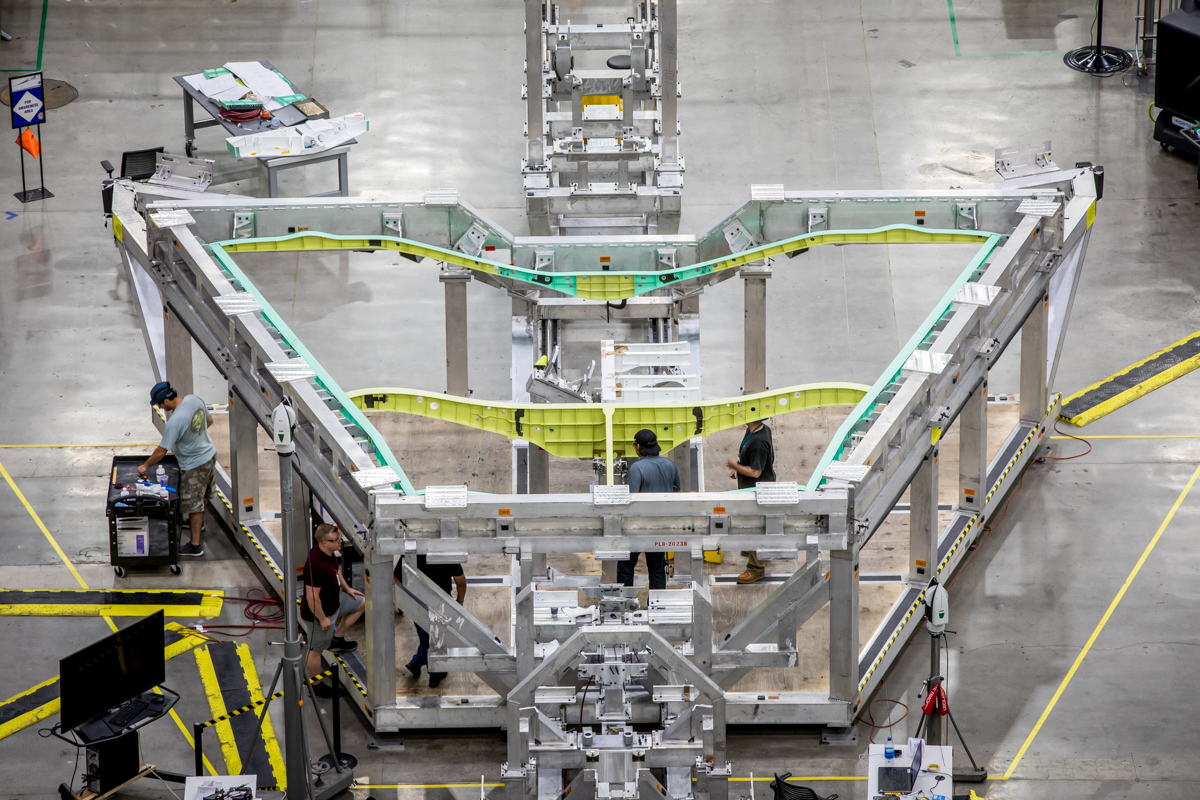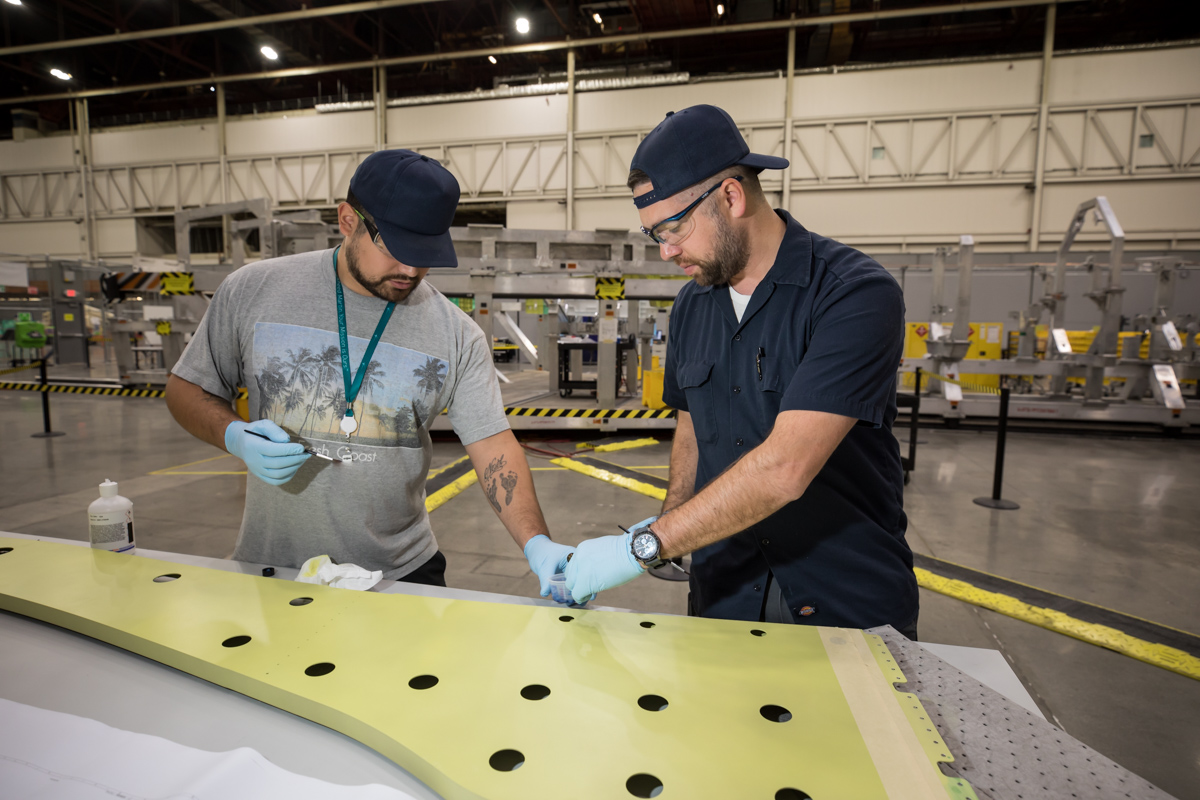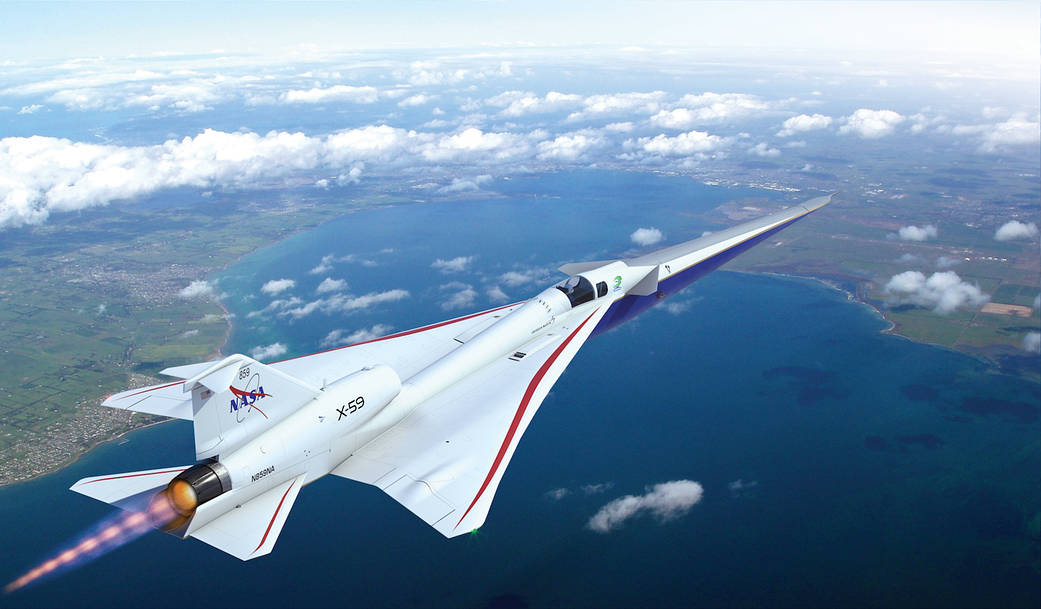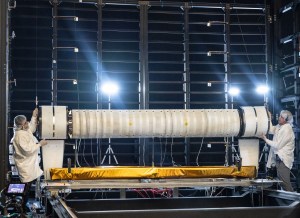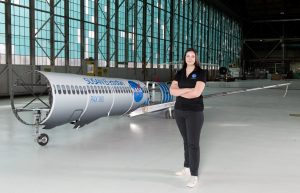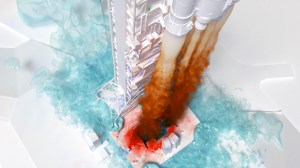In the high desert of California, where some of the most important aircraft in aviation history have been built and flown, the next airplane destined to take its place among those aeronautical icons continues to take shape on a legendary factory floor.
That airplane is NASA’s X-59 QueSST (short for Quiet SuperSonic Technology), an experimental piloted aircraft designed to fly faster than sound without producing the annoying – if not sometimes alarming – sonic booms of previous supersonic aircraft.
That factory is better known as the Skunk Works, a renowned Lockheed Martin division that for the past 76 years has used an out-of-the-box approach to design and manufacturing that has produced the nation’s most advanced airplanes.
Now that legacy continues as the company assembles the X-59 for NASA in Palmdale, California, where, for the first time since the initial machined parts were delivered in November 2018, workers can see the familiar outline of an airplane forming.
“It’s pretty obvious when you look at it on the production floor. You can see there’s an aircraft starting to get built,” said Craig Nickol, NASA’s project manager for the X-59, which also is known as the Low Boom Flight Demonstrator.
And with the recent completion in September of a major project milestone – known as the Critical Design Review, or CDR – the X-59 will rapidly accelerate its evolution from an airplane on paper toward an airplane ready to roll out of the factory and take flight.
“The CDR showed us the design was mature enough to continue into the next phase and essentially finish the assembly,” Nickol said, noting the next milestone will come in December when an independent review board will present their findings from the CDR – a gathering known as a Key Decision Point.
“They’ll go through their review of the CDR, present any findings or issues that need to be addressed and then will make a recommendation if we should proceed with the project,” Nickol said.
Based on the results from the CDR, no show-stopping issues were identified and the pace of assembly work on the X-59 is already ramping up.
“I think now the rubber is really hitting the road as we have dozens of parts coming in each week that we’ve completed the design engineering on and will be ready for installation,” said Mike Buonanno, a Lockheed Martin aerospace engineer who is the company’s vehicle lead for the X-59.
“We’re on track to meet all the key performance requirements of the airplane, including those driven by its shape, which is so essential to the mission of the X-59,” Buonanno said.
The Shape of the Mission
The X-59’s mission is to gather data that has the potential to aid in the opening of a new era of commercial supersonic air travel over land.
Here’s the deal:
During the 1960’s, as both the United States and Europe were developing a civilian supersonic transport – the SST and Concorde, respectively – the general public made it known they did not want to endure the constant annoyance of sonic booms from airplanes flying over their work and homes.
So, in 1973, after several years of research and due process, the Federal Aviation Administration (FAA) banned aircraft from flying over land faster than Mach 1 – the speed of sound, which can vary based on temperature and atmospheric conditions. That would prevent the loud sonic booms.
Although the SST program was cancelled in 1971, the Concorde went on to fly for British Airways and Air France from 1976 to 2003, its supersonic cruising near the United States limited to only over the Atlantic Ocean.
Still, the demand for commercial supersonic air travel continued, which prompted this question: What if you could fly a supersonic airplane that didn’t produce loud sonic booms? What if, for those on the ground below, those sonic booms were quiet enough not to be an annoyance, or perhaps not heard at all?
That’s what the X-59 is going to help find out.
Based on decades of research into supersonic flight that included work in wind tunnels, testing concepts on aircraft in flight, and using powerful supercomputers to run simulations, NASA’s aeronautical innovators think they’ve come up with a solution.
By carefully designing the aircraft’s shape and overall configuration, engineers have found a way to manipulate the shockwaves coming off an airplane flying supersonic so they don’t produce sonic booms as intense as those the public is wary of.
It will be the X-59’s job to validate those theories, and once that’s done the airplane will go on the road, so to speak, and be flown over several U.S. communities (yet to be selected) so residents below can provide reactions to what they might or might not hear.
That data will then be passed on to the FAA and international regulators who, it is hoped, will use that information to help rewrite the rules so that supersonic flight over land is regulated based on noise levels and not the arbitrary speed of Mach 1.
When that happens, a major hurdle will be cleared for the nation’s aviation community to move forward in establishing a new market for commercial supersonic flight over land, where people and packages can get to their destinations in half the time.
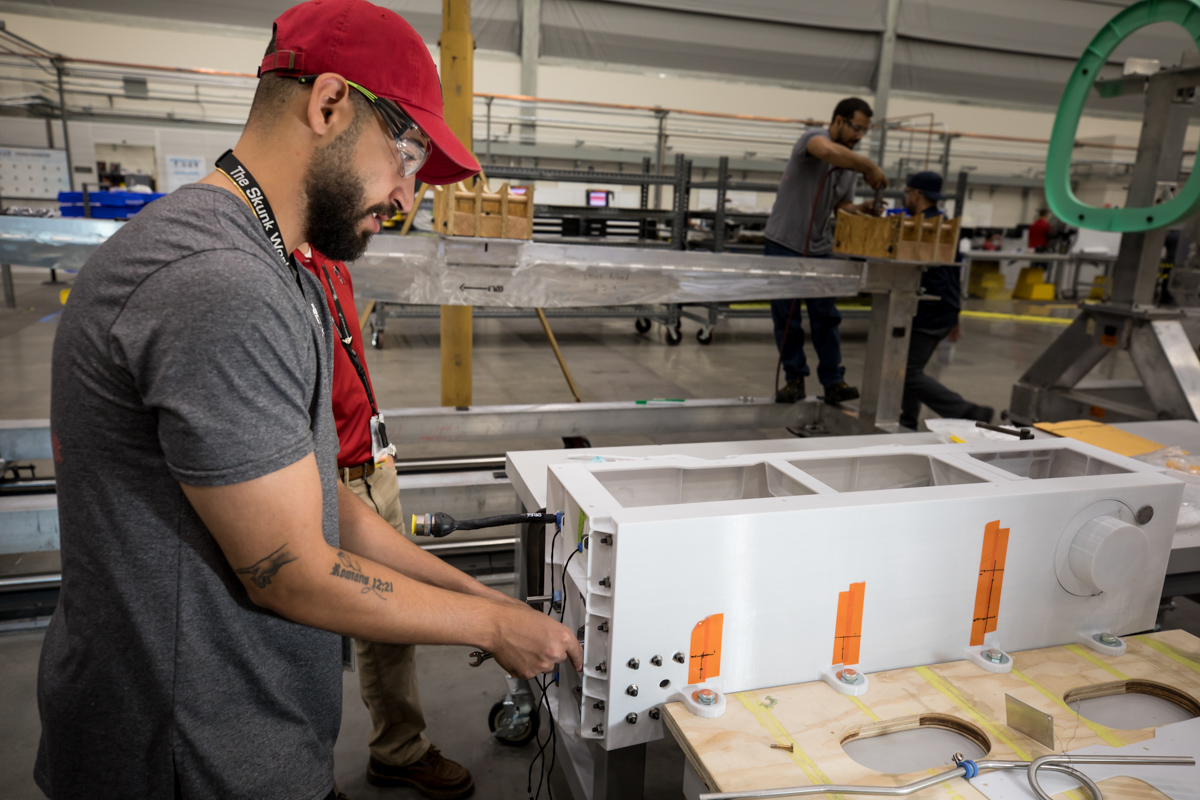
Skunk Works’ Rules
Perhaps it’s only fitting the future of commercial supersonic aviation in the form of the X-59 is being built by the company responsible for the fastest airplane in history – the SR-71 Blackbird – using innovative production processes that go back 76 years.
“The purpose of us building the X-59 at the Skunk Works isn’t really for us to pioneer new manufacturing technologies. It’s to use what we know works well to get the airplane built and flying for our customer,” Buonanno said.
That’s not to say the company isn’t using the most modern technology available in delivering their aircraft. It is.
But what makes the Skunk Works unique in its approach to manufacturing is embodied in 14 rules originated by aviation legend Kelly Johnson, who led the Lockheed team in World War II that designed and built the nation’s first jet fighter – the XP-80 – in only 143 days.
Those rules call for small teams, simple approaches, close communication, streamlined paths of authority, and a healthy dose of common sense all summarized by the words quick, quiet, and quality.
Today that manufacturing heritage is guiding Lockheed Martin as it builds the one-of-a-kind X-59.
“We still hold true to those rules that Kelly Johnson came up with 76 years ago, especially of having engineers on the floor ready to respond to issues, with the key goals of keeping drills drilling and wrenches turning on a regular basis,” said Tom Alexander, Lockheed Martin’s special projects operations manager.
The X-59 assembly work taking place on the Lockheed Martin production floor is concentrated within three major sections of tooling.
The forward jig is home to the X-59’s fuselage, the center section to the airplane’s single-piece wing, and the rear jig is set up for the fabrication of the airplane’s tail holding the vertical fin and the horizontal stabilizer – a section also known as the empennage.
Most of the activity right now is focused on the fuselage and wing jigs, but the empennage section (which also includes the airplane’s single jet engine) will receive more attention starting in November, all of which keeps things right on schedule going into 2020.
“By about a year from now they should have most of this aircraft assembled and the subassemblies mated together. And a little over a year from now this aircraft should be ready to go into major testing,” Nickol said.
Initial flight tests to ensure the vehicle is operating well in 2021 will be followed by a series of supersonic flights to validate if it is producing quieter sonic booms as expected. After that, the X-59 will begin its community overflights to gather public response data, with the plan to present that information to the FAA and others in 2023.
“Sometimes building an airplane is a little tough but having that exciting end goal really helps keep the team energized,” Buonanno said.
X-59 Assembly Update Outtake
Aviation trivia buffs take note: the answer is C612.
After years of working on a preliminary design and then months of fine-tuning the many engineering drawings and resulting configurations for an airplane like this, that’s the number for the final version of the X-59.
“The exterior lines of the airplane, what we call the outer mold line, are now frozen. This is the way the X-59 will look, although we might have to make some very minor changes, such as where we put antennas,” Nickol said.
That external look also includes a red, white, and blue paint scheme designed to accentuate the supersonic jet’s unique, sonic-boom-quieting shape. While that won’t change, some of the logos and related markings will be updated when Lockheed Martin officially turns over ownership of the airplane to NASA.
Internally, meanwhile, the story is the same. The design is set, although small adjustments may be needed based on experience gained during the ongoing manufacturing, assembly, and integration process.
“We don’t expect to have any further configuration level updates, meaning there won’t be a C613,” Nickol said.



























